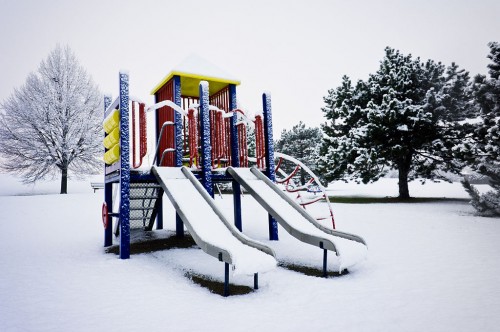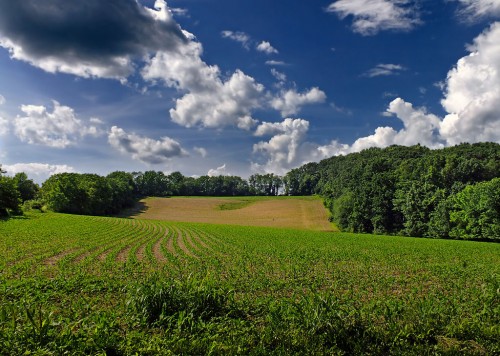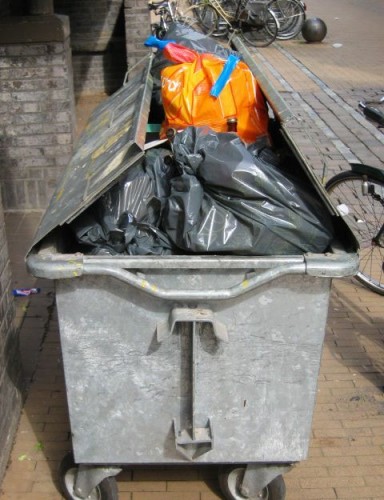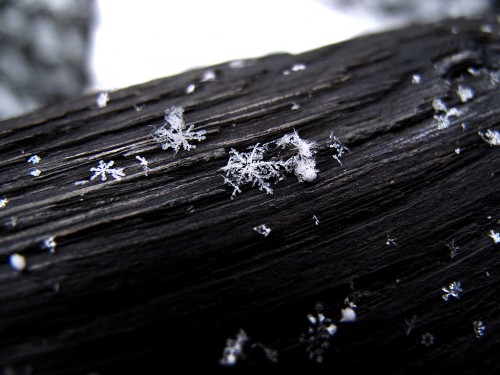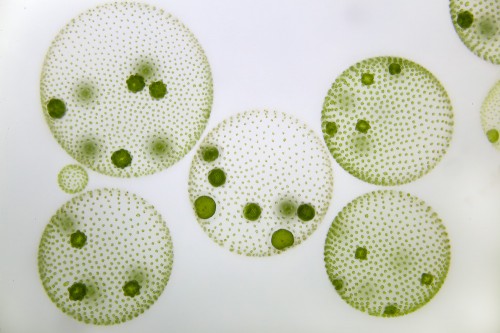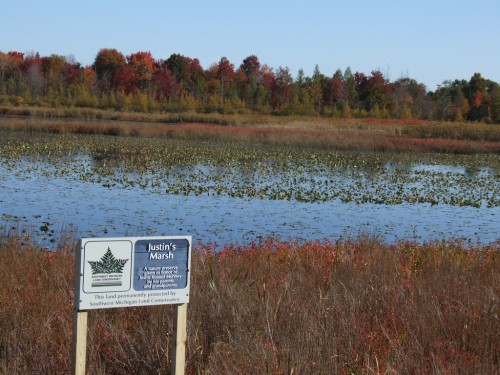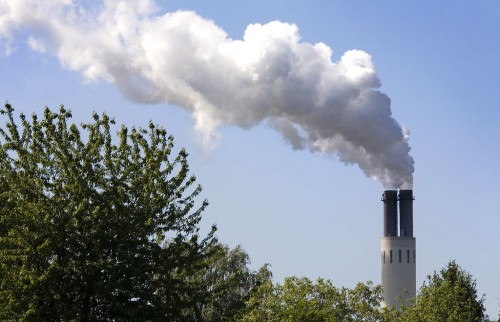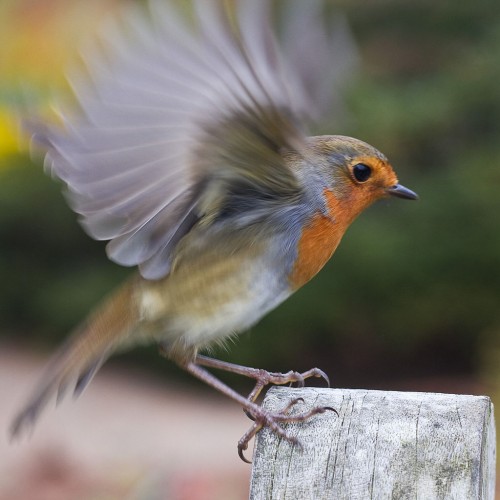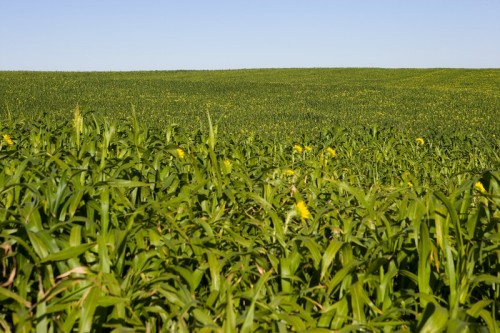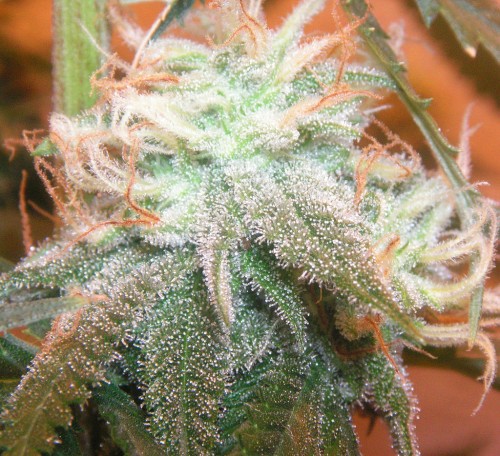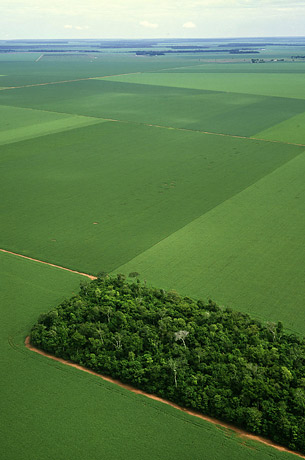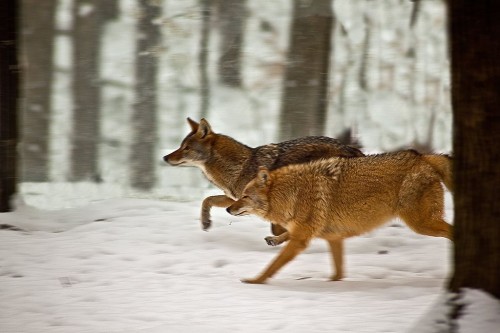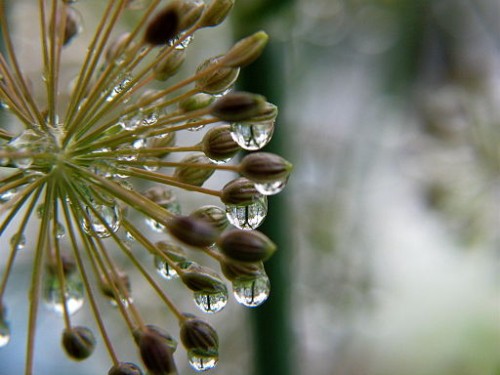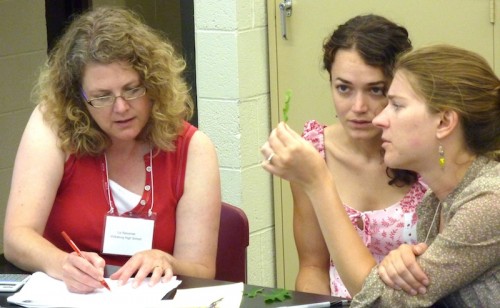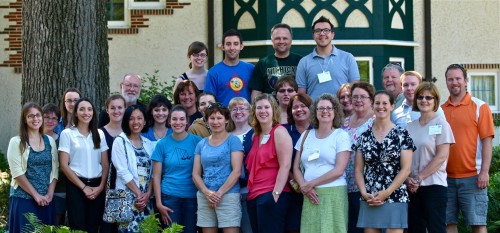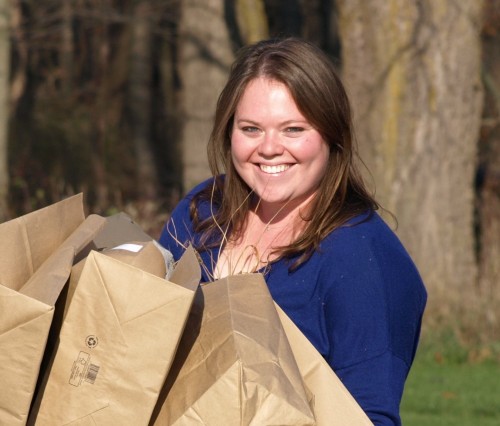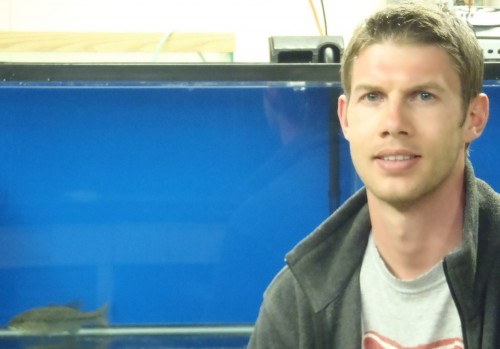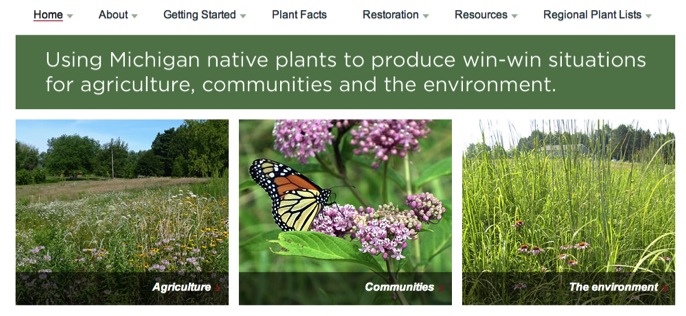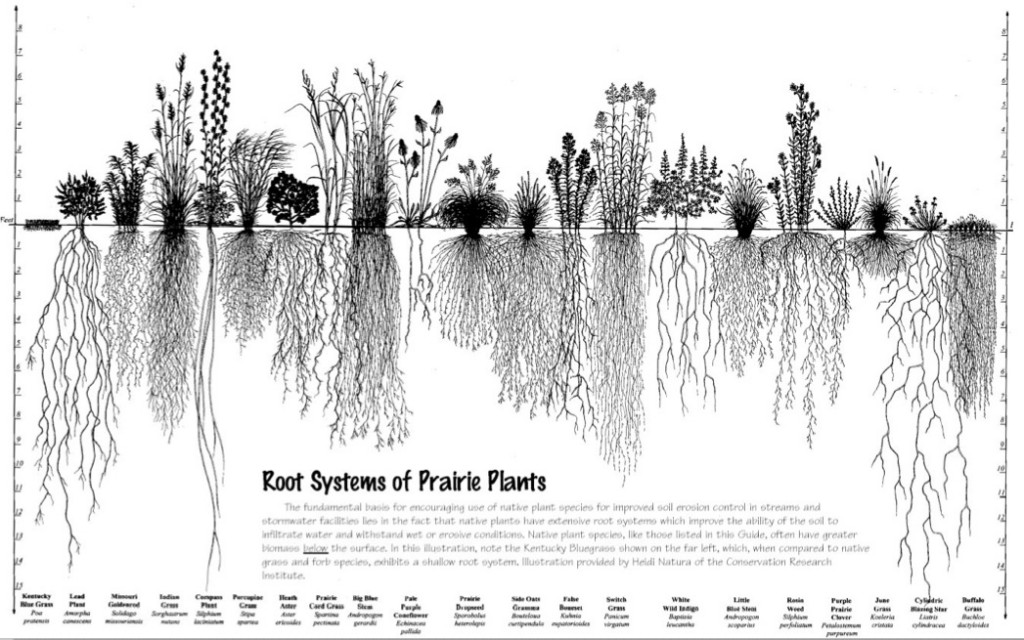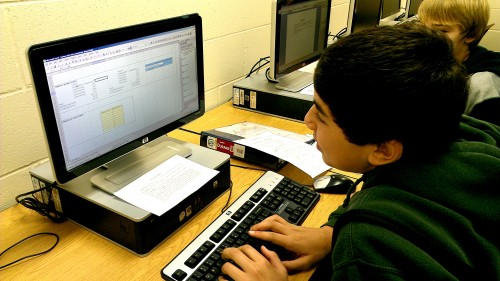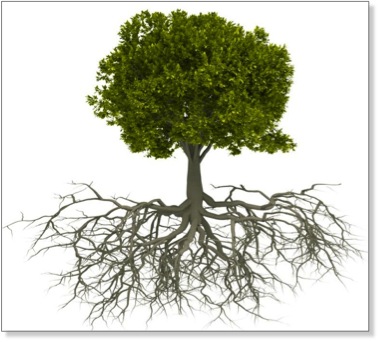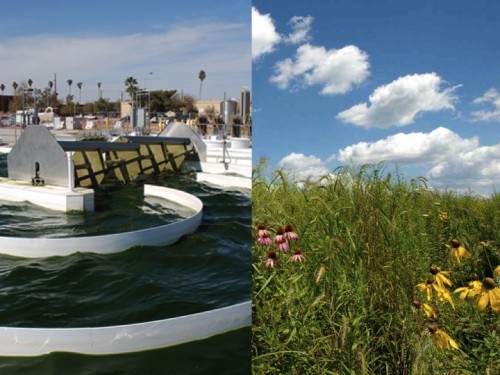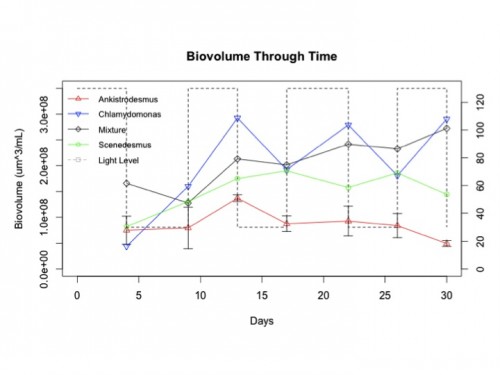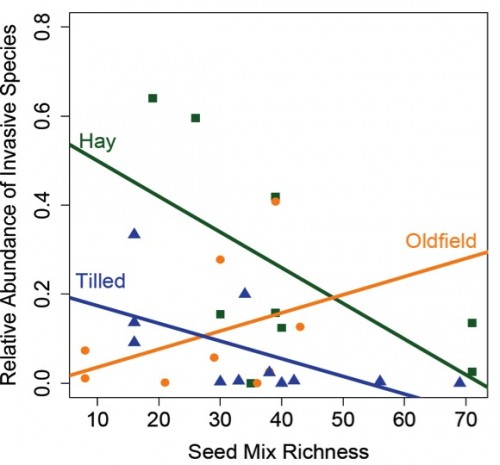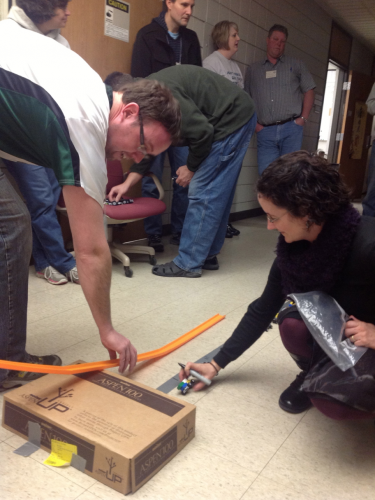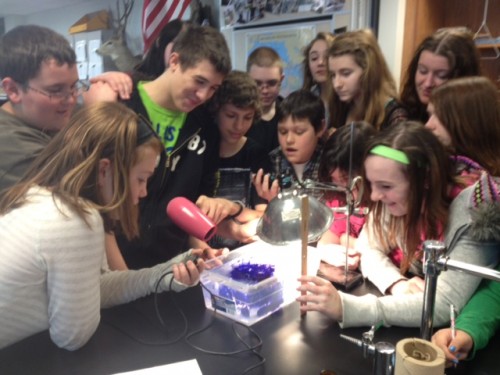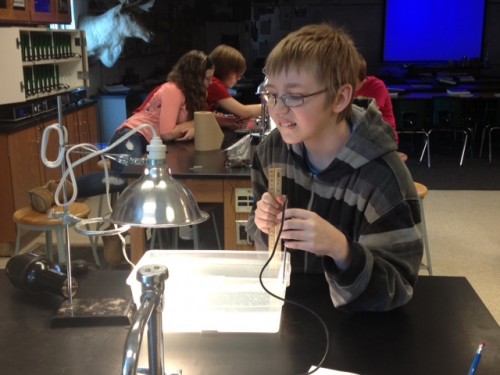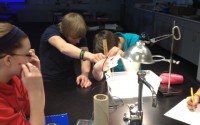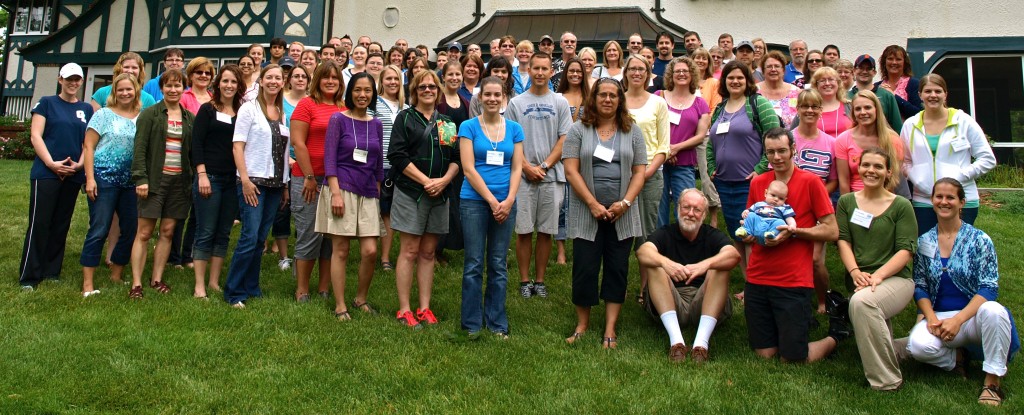
Participants in the 2013 KBS K-12 Summer Institute
It was the last week of June and KBS was a hive of activity. The annual K-12 Summer Institute lasted just 3 days this year but was action packed. Sessions were conducted by the GK-12 fellows, both new and returning, and by the MSP research associates. Since the institute ran for just three days, we had a plenary session everyday!
Our first plenary speaker was Dr. Carolyn Malmstrom from the Dept. of Plant Biology at MSU. She spoke on the topic ‘It’s a small small world: Plant viruses and ecology’. She was a perfect fit for us since one of the questions she focuses on is ‘How do we preserve biodiversity and ecosystem services in working landscapes’? Sounds a bit familiar, right? Dr. Malmstrom started her talk by describing viruses as a ‘space capsule with a protein coat containing genomic nucleic acid’. She went on to describe the remarkable diversity in viruses – in their structure and genomic acids.
Viruses affect their hosts in many different ways. Some of them alter the host genome expression. By marking which part of the DNA should be transcribed they can change the expression without changing the DNA sequence. Virus infection also helps to augment the host genome. Plant viruses have been found to endogenize into insect genomes including that of mosquitoes and Monarch butterflies. Viruses also can alter an organism’s performance.
In our efforts to get viruses out of our food plants we have concentrated only on one part of the landscape, i.e. agriculture. In this bid we have taken our focus away from the big picture, we do not understand what is happening in the natural ecosystem. There are big ecological differences between agricultural systems and the natural ecosystem. It is important to understand how ecosystem diversity and stress in the natural ecosystems affect viruses. Before she concluded, Dr. Malmstrom left us with this different perspective: Viruses might actually be helping to bind the fabric of life and keep it supple.
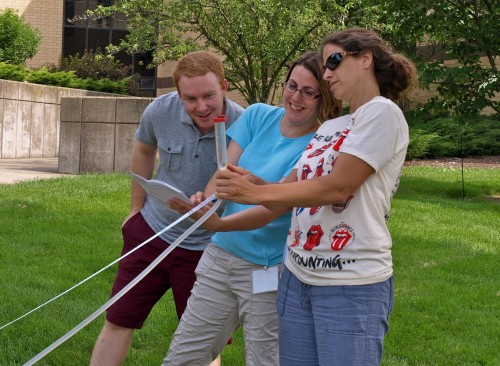
Landscape protocol water levels are the best!
We had two sets of concurrent sessions on the first day. Following ‘tradition’ our returning fellows and their partner teachers conducted sessions based on the BEST plots. They did a commendable job of making the ever-so-familiar protocols new and exciting. Of course, the cool titles that they came up with had a fair bit to do with the excitement.
Dustin and his partner teachers, Becky and Liz, presented ‘Dirty deeds done dirt cheap’. As the topic suggests they explored the revised soil protocols. It should be noted too, that this session had an added attraction in the form of ‘dirt cup-cakes’.
Jake teamed up with Russ, Cheryl and Chris in ‘Uncovering the Legacy of our Landscapes’. They put a new spin to the landscape protocols by introducing a historic perspective. The teachers did get to play with the now-famous water level, too.
In ‘Invertebrates, going above and beyond’ Cara, Sandy and Mary stepped beyond the standard invertebrate protocols. They encouraged the teachers to use the existing data to generate new questions and hypothesis.
Sara, Marty G. and Lisa dealt with the plant biodiversity and biomass protocols in their unambiguously titled session ‘BEST Plots: Plant Biodiversity and Biomass’. They attempted to explore the unexplored aspects of growing our fuel while keeping our flowers and butterflies too.
Three of our new fellows to got their feet wet the first day. Dani Fegan’s interests include community ecology, landscape ecology, and restoration ecology. She teamed up with Marty B. and presented ‘Bug Lyphe: A Next Generation linked observational study in biodiversity’. They went out and trapped insects (using our BEST protocols of course), and used the data that they thus generated to compare biodiversity in natural and disturbed habitats.
Emily Dittmar is interested in adaption, specifically in the role that genes play in allowing populations to adapt. She, along with Jamie, conducted a session titled ‘Variety is the Spice of Life’. They used a variety of props including a deck of cards, dice and a game of musical chairs to introduce the basic logic behind Hardy-Weinberg Equilibrium.
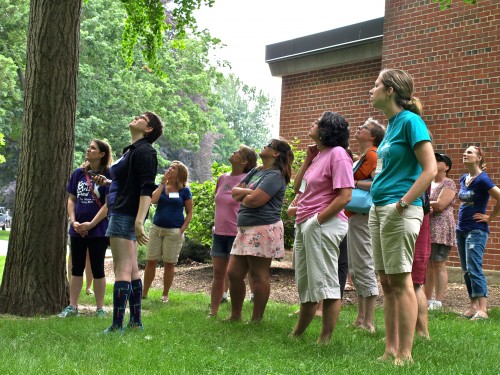
Considering natural variation
Amanda Charbonneau comes to us with an interest in evolution and adaption of species to new environments. Along with Terri and Meredith, she lead the session ‘Survivor: Extreme Environments: How invasives outwit, outplay and outlast their competitors’. With the help of a short ‘variation walk’ they explored the need for variation in order for adaption to take place.
Jenny Dauer, representing the Carbon Strand of MSP, conducted the session ‘Keeling Curve-arama: understanding what is local versus generalizable about atmospheric carbon dioxide concentrations’. Her session discussed the reason why Keeling went to Mauna Loa to collect his data instead of just collecting it in his backyard. The teachers also got a chance to see the local differences in CO2 concentrations by measuring CO2 levels at different locations in the KBS property.
Dr. Catherine Lindell from the Dept of Zoology at MSU was our plenary speaker for Tuesday. She spoke on ‘Birds & their roles in ecosystems : Tropical Forests to Michigan’s food crops’.
Dr. Lindell stressed that the value of birds in a particular ecosystem depends on the use humans have assigned to that particular ecosystem. One of her study sites is in Costa Rica where there is massive habitat loss due to deforestation. Efforts are now going on to try and restore these habitats. Birds are great helpers in this process. They not only serve as agents of seed dispersal but they also prey on herbivorous insects, and pollinate the flowers. Studies are going on to try and determine the optimum design for planting taking into consideration these seed dispersers and their needs.
On the other side of the coin birds in Michigan can prove to be pests, especially to fruit farmers. Birds cost farmers millions of dollars through fruit loss and management efforts. Dr. Lindell and researchers from several other institutions have teamed up to try and quantify this damage and test strategies to minimize the losses.

Botanizing under the supervision of Larry the Lamprey
Following the plenary, instead of breaking into concurrent sessions as usual we had one more common session. Sara S., Cheryl and Nancy conducted a session on the Next Generation Science Standards. Their aim was, to quote Cheryl, ‘To comfort the afflicted and afflict the comfortable’!
They reminded us of the fact that the NGSS are written as performance expectations and they will require contextual application of the three dimensions by students. By conducting a simple polling exercise they tried to get teachers used to the idea of including more practises in their classrooms.
One set of concurrent sessions followed the lunch break. Two new fellows (assisted by their partner teachers) made their debut. Sarah Jones studies the biological causes of sex differences in aggression in spotted hyenas. Along with Sandy she explored this very topic in their session ‘Roid Rage: Just for Boys?’. They tried to analyze if there are differences in aggression among sexes, what causes them and how do we study and interpret them.
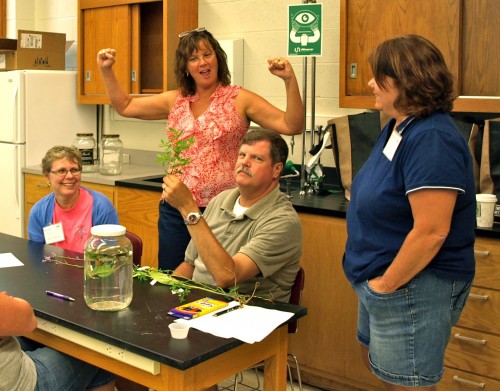
Teachers excited for new sessions!
Susan Magnoli is motivated by a fascination with invasive plants. Marcia and Jodie joined her to talk about ‘Michigan’s Most Unwanted’. They guided the teachers in making and using a variety of keys to help students to identify invasive species. They also used several graphing activities that allow students to make their own inferences based on the data provided.
Jennifer Doherty, from the Biodiversity strand of MSP, attempted to present diversity in an evolutionary context in her session : ‘Unifying Life: Placing tree diversity in an evolutionary context’. She presented three lesson plans. The first illustrated the importance of careful observations and precise language; the second used observed similarities and differences to organize species into larger groups; and the third lesson plan aimed at helping students understand that traits are a reflection of ancestry.
Before we concluded for the day, everybody met in the auditorium to get the latest update on the State of the BEST Plots and enjoy some snacks.
Our last plenary speaker was Dr. Maren Friesen from MSU’s Plant Biology Dept. Her topic was ‘Ecological genomics of salinity adaptations in model legume Medicago truncatula’. Her chosen study species Medicago truncatula serves as a genetic model for crop legumes. It is a diploid, annual selfing plant. In order to study the salinity adaptations in the legume, Dr. Friesen has conducted experiments with plants derived from saline and non-saline sites in Tunisia. She later carried whole genome sequencing for each of the 40 lines to locate candidate genes for local adaptations. As a result of her extensive research she has shown that rhizobia influence plant salt tolerance. Adaptation to salinity is not only due to the differences in the plants but due to the differences in the rhizobia present in the different plants.
Before we could draw the curtain on another wonderful summer institute, we participated in a ‘KBS Trivia’ game conducted by Kara Haas. It was a fun and candy filled finale of the KBS K-12 Partnership Summer Institute 2013. Thank you all for making it another great one!
~ By KBS volunteer extraordinaire, Joelyn de Lima.

